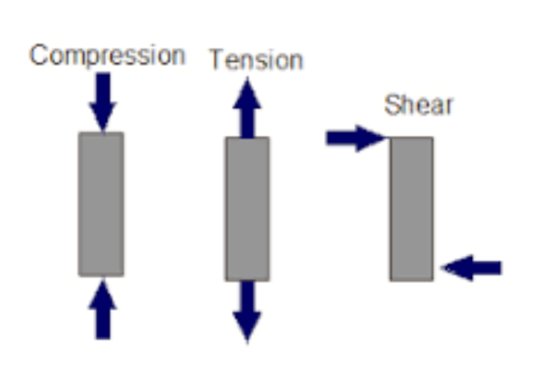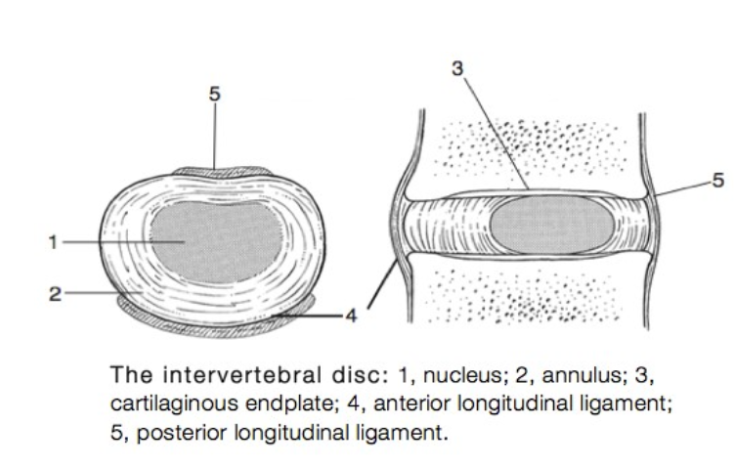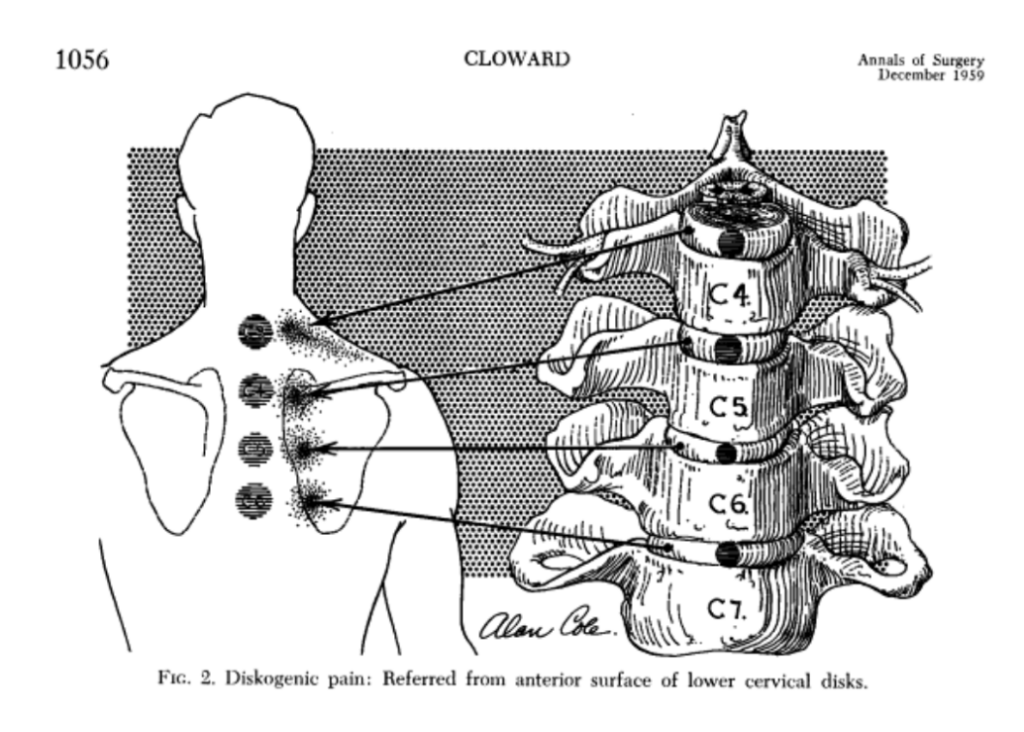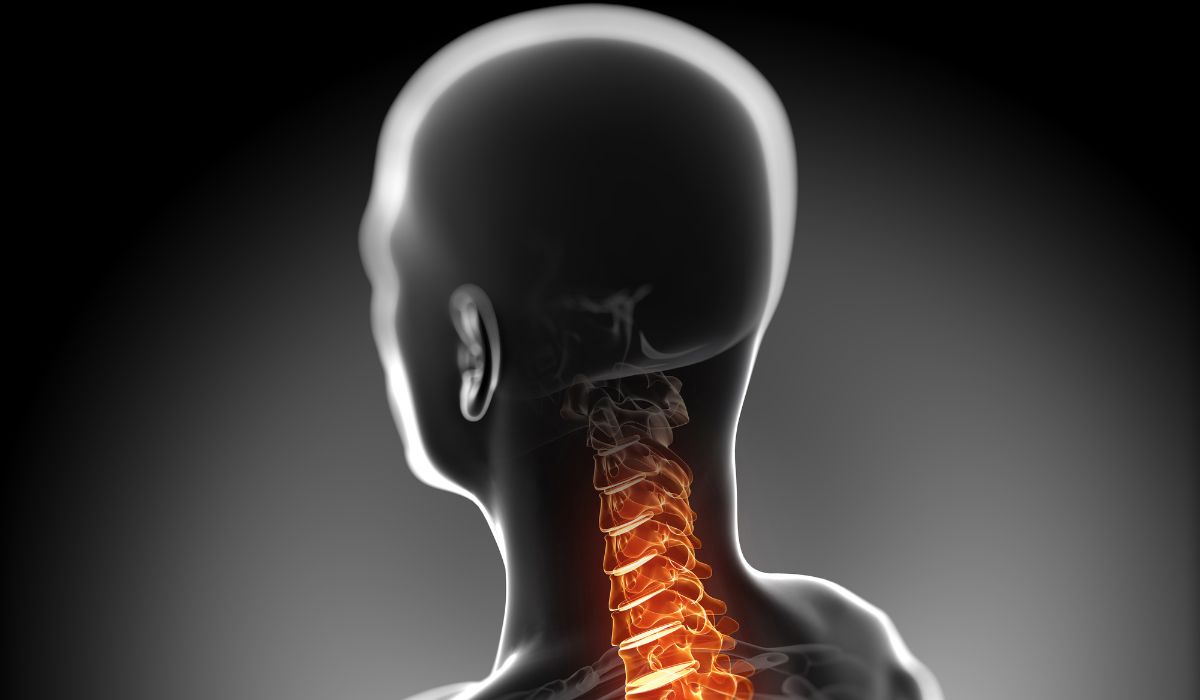
There are 23 discs in the spine: 6 in the cervical region (neck), 12 in the thoracic region (middle back), and 5 in the lumbar region (lower back).
The disc’s function is to provide flexibility and stability to the spine. The disc absorbs approximately 70% of the forces placed on the spine in multiple movements and resists shear stress on the spine (1).
A Disc is Made Up of 3 Main Parts:

1. Nucleus Pulposus
The Nucleus Pulposus is the center of the disc and >2/3rds of the disc is water and extra cellular matrix (type II collagen) with very little cells
2. Annulus Fibrosus
Annulus Fibrosus makes up the tough outer shell of the disc that holds the nucleus in. The annulus is made up mostly of Type I collagen in concentric circles. Examples of other structures made of type I collagen : Skin, bones and tendons. The Annulus makes up majority of the structural support of the disc!
3. Endplates
Endplates are the part of the vertebrae above and below the disc that actually supplies the disc with nutrients since the disc itself is very much avascular (no blood flow)
4 & 5. Anterior and Posterior Longitudinal Ligaments
The anterior and posterior longitudinal ligaments could be considered the 4th and 5th, which help stability of the segment during extension and flexion (respectfully).

Why is the Disc Painful?
The only part of the disc that has innervation is the outer layer of the annulus. Thus, any damage or tears in the annulus has the potential to generate pain. Innervation happens via the sinovertebral nerve (SVN).
A tear in a disc is called an “Annular Tear” but can also go by many names such as the following:
- Annular fissure(s)
- Disc protrusion
- Disc herniation
- Disc extrusion
A disc cannot herniate if the annulus is intact, so, in order for a herniation / protrusion or extrusion to occur, there must exist an annular tear as the root cause.
What is Discogenic Pain in the Cervical Spine?
“Discogenic pain” refers to the pain that is generated from the disc itself in an injury. For example, the disc can herniate and mechanically irritate the exiting nerve root, causing nerve pain to shoot into the arm. A tear in the disc can lead to leakage of its contents out into the area around the disc, creating a chemical irritation that can cause arm pain. This is known as radiculopathy or radiculitis (pain originating from the nerve), but the pain originating from the disc is considered discogenic pain! Research from patients who underwent an injection to pressurize painful discs (discogram) described the pain as a deep, dull ache to dagger-like sensation located in the:

- “The upper shoulder blade”
- “At the base of the neck”
- “The top of the shoulder”
- “The point of the shoulder”
- “The upper arm as far as the elbow” (2).
Can Anything Mimic Cervical Discogenic Pain?
This pain overlaps multiple other conditions, such as:
- Thoracic Radiculitis
- Thoracic discogenic pain
- Thoracic facet joint syndrome
- Scapulothoracic bursitis
- Cervical radiculitis
- Cervical facet joint syndrome
- Myofascial pain
This highlights the importance of a good physician to do thorough evaluation that should include an in-depth history of the condition, detailed physical examination, and image review, and not just reading the MRI report. Reviewing the actual images are critical, as radiologist only spend a few minutes on each MRI before producing a stock report. All areas are critically important to arrive at the right diagnosis, which, in turn, will lead to the proper treatment of the condition.
If you think you are dealing with a cervical disc injury or have been dealing with spine condition, and have not been able to find a treatment that can help, then reach out today and get evaluated by one of our cervical spine experts, such as Dr. Jason Markle or Dr. John Pitts!
References:
- Jonas Widmer, Frédéric Cornaz, Gita Scheibler, José Miguel Spirig, Jess G. Snedeker, Mazda Farshad, Biomechanical contribution of spinal structures to stability of the lumbar spine—novel biomechanical insights, The Spine Journal,Volume 20, Issue 10,2020,Pages 1705-1716,ISSN 1529-9430, https://doi.org/10.1016/j.spinee.2020.05.541. (https://www.sciencedirect.com/science/article/pii/S1529943020307622)
- Cloward RB. Cervical diskography. A contribution to the etiology and mechanism of neck, shoulder and arm pain. Ann Surg. 1959 Dec;150(6):1052-64. doi: 10.1097/00000658-195912000-00013. PMID: 13810738; PMCID: PMC1629000.




